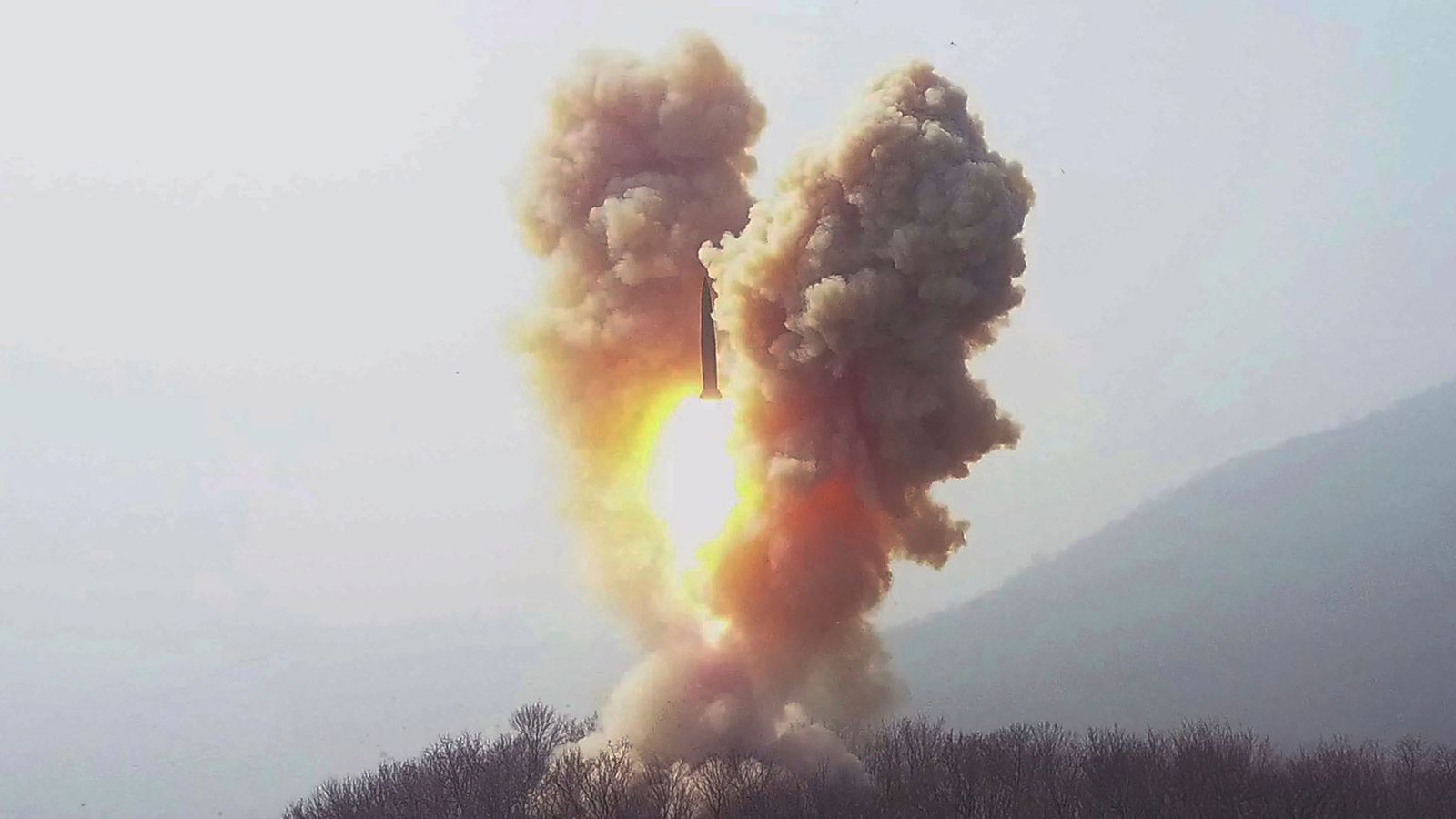North Korea says it has simulated a nuclear counterattack against the US and South Korea as it fired another ballistic missile over the weekend – its fifth this month.
Kim Jong Un instructed his military to hold more drills to sharpen the war readiness of his nuclear forces in the face of “aggression” by his enemies, state media reported.
He said the exercises improved his military’s war capability and urged the military to stand ready for any “immediate and overwhelming nuclear counterattack anytime”.
The latest launch by the secretive nation came as the US and South Korea conduct their largest joint military exercises in years.
Pyongyang’s official Korean Central News Agency (KCNA) said the missile, which flew about 500 miles, was tipped with a mock nuclear warhead.
It described the test as successful, saying the device detonated as intended 800 meters above water at a spot that simulated an unspecified “major enemy target,” supposedly reaffirming the reliability of the weapon’s nuclear explosion control devices and warhead detonators.
KCNA said the exercises on Saturday and Sunday were designed to boost the country’s “war deterrence and nuclear counterattack capability”, accusing Washington and Seoul of making an “explicit attempt to unleash a war” against it.
North Korea warns US shooting down test missiles will be considered a ‘declaration of war’
What’s going on with Kim Jong Un and his daughter?
North Korean state media urges rejection of ‘poisoned candy’ foreign aid despite food shortages
Unusually, the short-range missile flew from a buried silo, which analysts say would help fire future missiles with little warning while evading outside monitoring.
Pyongyang is racing to perfect intercontinental ballistic missiles (ICBMs) capable of striking targets anywhere in the US.
Please use Chrome browser for a more accessible video player
Read more:
North Korean state media urges rejection of foreign aid
Kim Jong Un’s sister warns of ‘using Pacific as our firing range’
“With a silo, you can quickly fire a missile, almost immediately,” said Yang Uk, a fellow at the Asan Institute for Policy Studies in Seoul.
“And without launch preparations being detected in advance, you can just press a button.
“But the downside is that silos can be detected with satellite imagery, so someone would always keep an eye on them, and they might just be incapacitated in a pre-emptive strike.”








